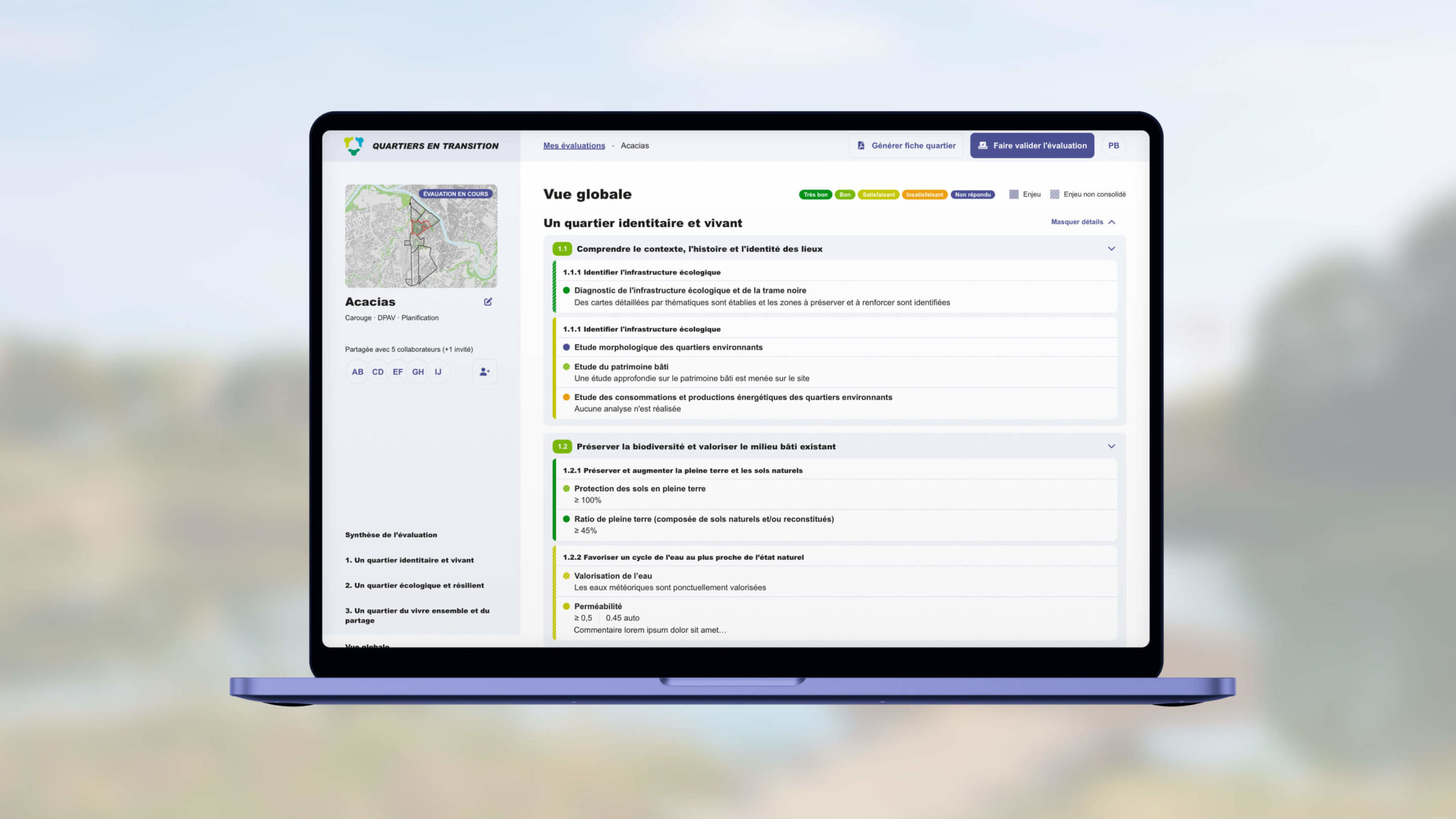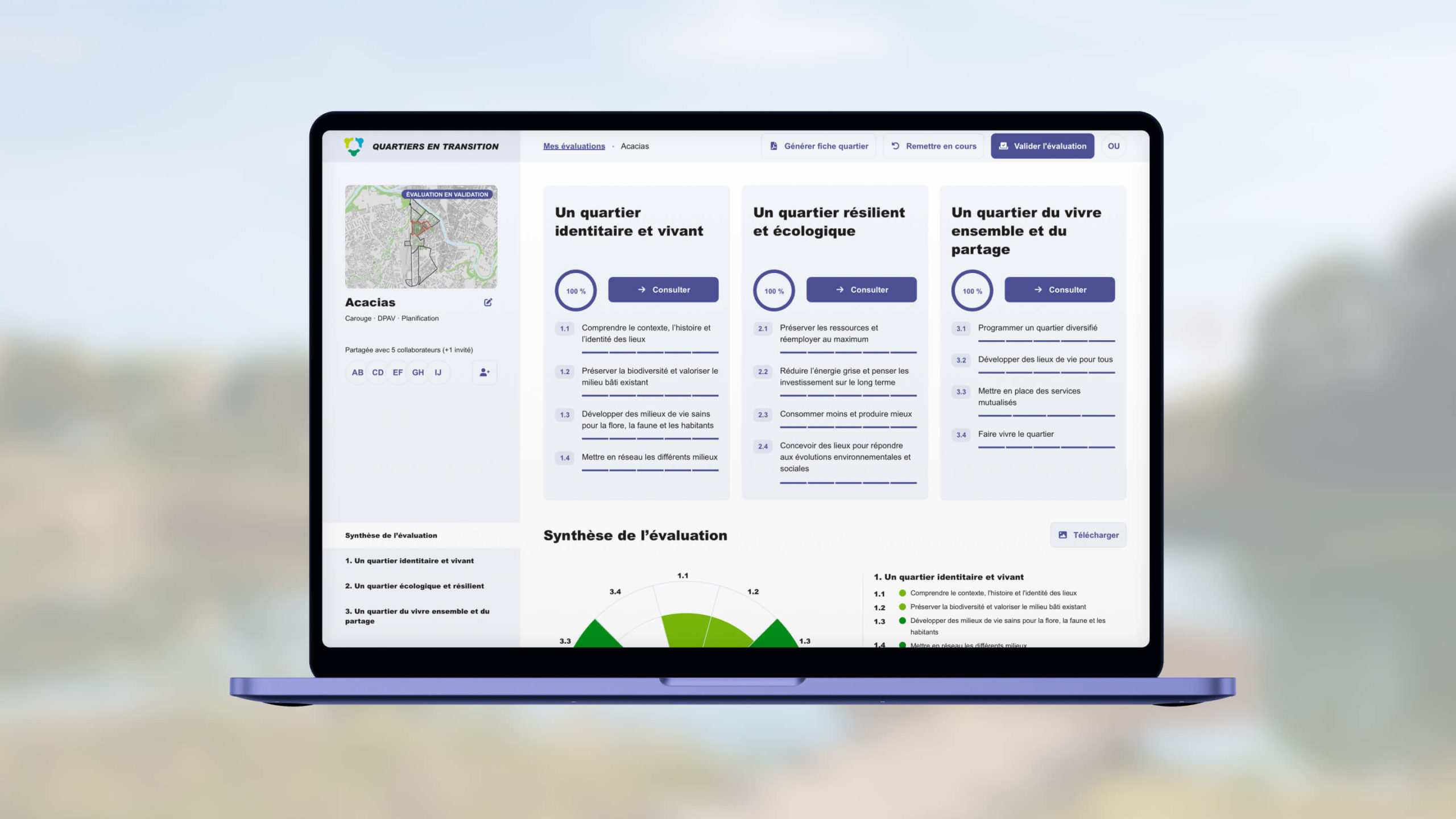Impacts from January to June 2024
- 127 users
- 37 projects
Design and development
- 6 months
Technologies
- TypeScript, React, TRPC, Prisma
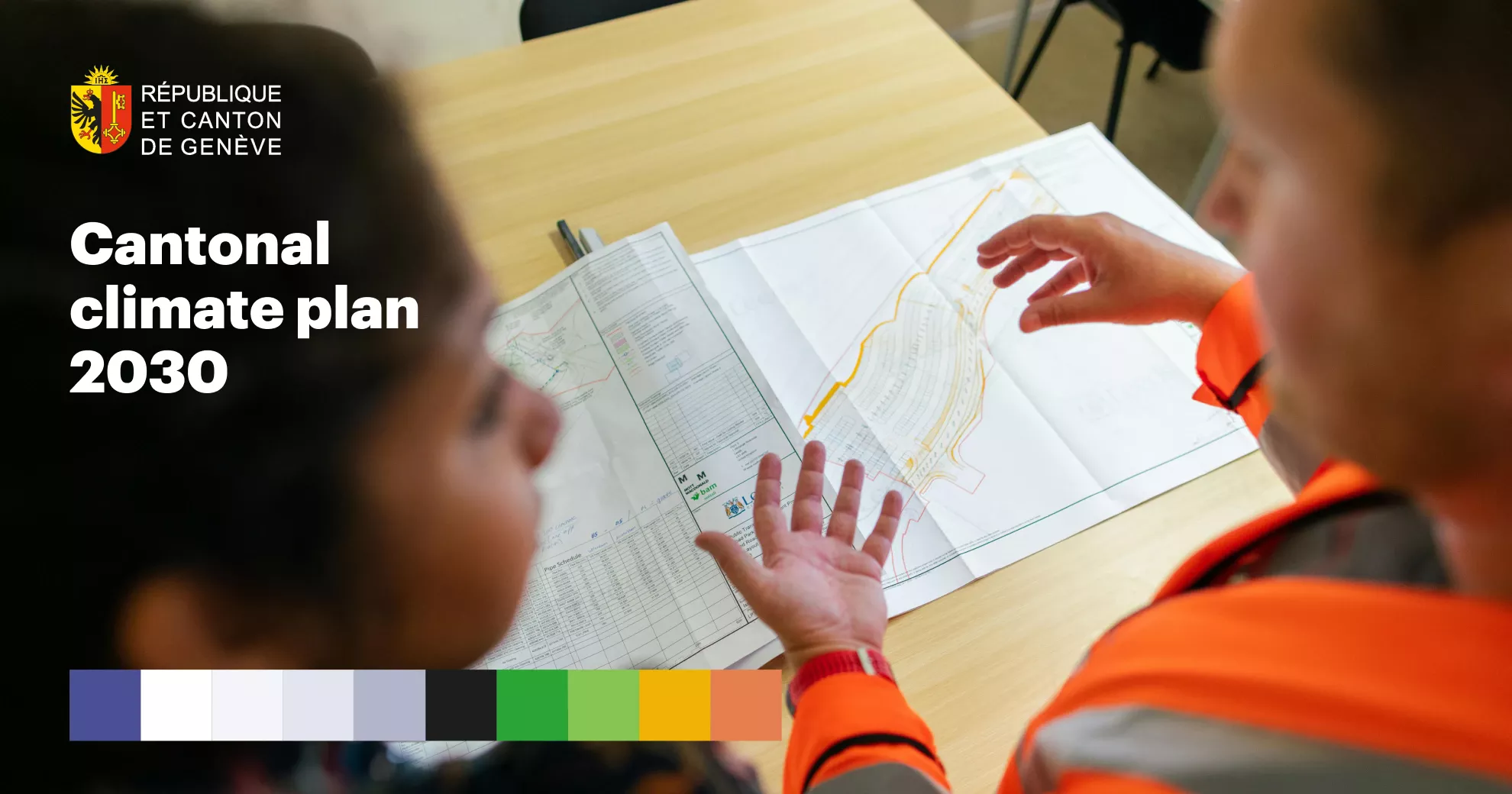
Sustainable ambitions for the Canton of Geneva
The cantonal climate plan of the Canton of Geneva aims to adapt the territory to climate change, targeting a 60% reduction in greenhouse gas emissions by 2030 and carbon neutrality by 2050 at the latest. Overall, the goal of carbon neutrality in 2050 is based on emissions ten times lower than today. With the support of Latitude Durable and TRIBU Architecture, the canton has identified three major axes, twelve issues, and about sixty objectives to achieve quality and sustainable neighborhoods.
Thus, the “Quartiers en Transition” charter was born. It is an ambitious document supported by the Office of Urban Planning (OU) in partnership with the Cantonal Office for the Environment (OCEV). The document aims to guide and assist in the design of sustainable and quality neighborhoods. The approach pursues the following goals:
- Propose ambitious objectives throughout the life cycle of an urban project
- Evaluate a neighborhood at different stages of planning and make necessary adjustments
- Ensure traceability of the choices guiding the project’s life

Who are the initiators of the “Quartiers en Transition” approach?
The Geneva Office of Urban Planning (OU) contributes to the development and implementation of a rational land-use policy. It notably promotes the construction of housing and the development of economic, social, and cultural activities. It is responsible for maintaining an attractive living environment and enhancing the natural and built environment.
The Cantonal Office for the Environment (OCEV) proposes and implements environmental protection policies. These contribute to reducing pollutants in the air and buildings, noise, non-ionizing radiation, and the risks of major accidents. It aims to preserve exploitable natural resources through good management of soil, subsoil, and waste. OCEV anticipates future environmental issues and ensures that the environment is taken into account in land-use planning. It coordinates and evaluates projects subject to environmental impact studies or notices (about 10% of the territory).
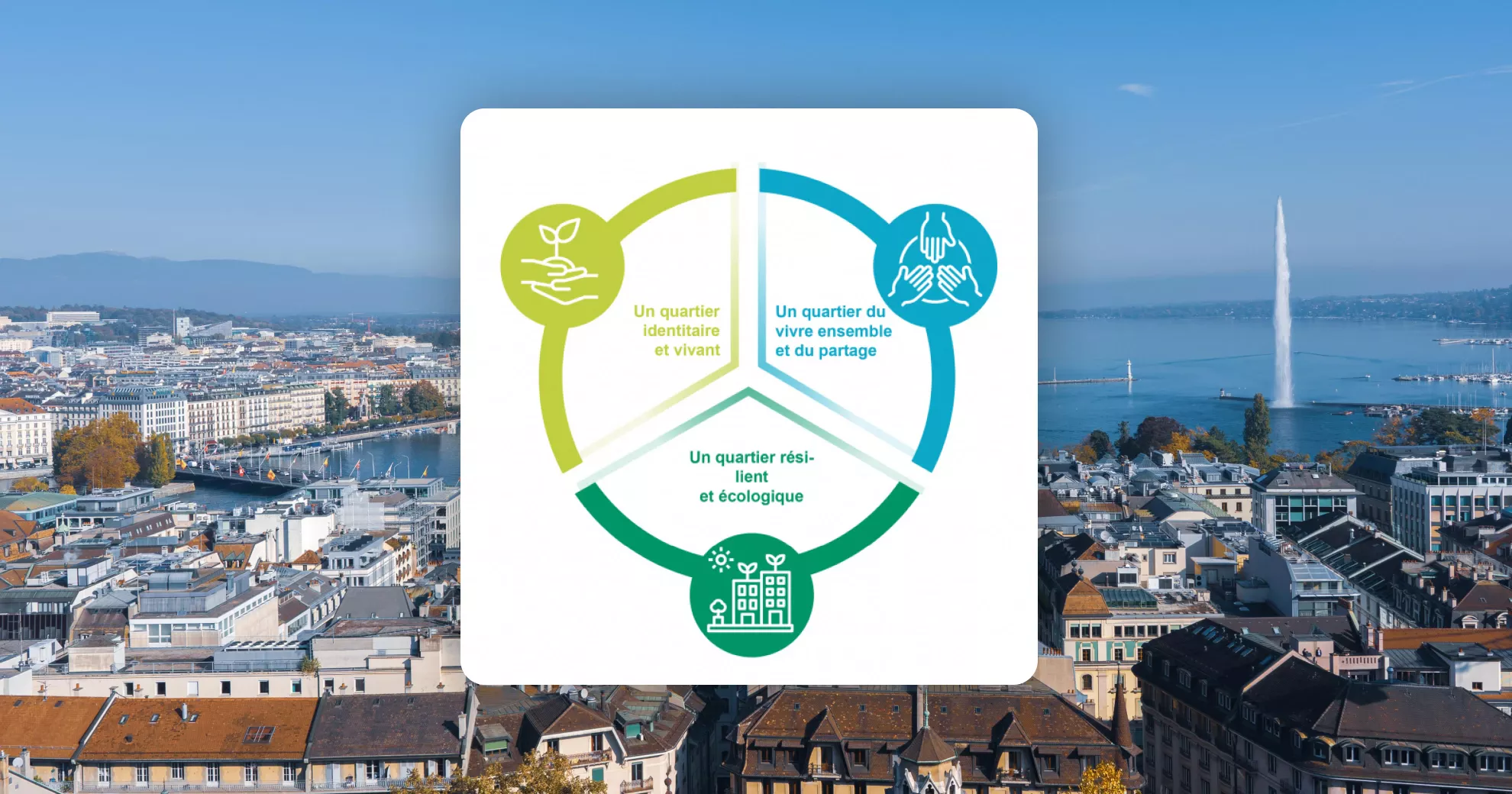
A digital tool at the service of the city
Defining a charter is a necessary governance and coordination effort. However, it can be quite complex to translate into concrete actions. It was necessary to limit the risks of interpretation and ensure that the avenues and axes to be developed were taken into account and respected. To achieve this, the charter needed to be given a playful and easy-to-use form. A simple “paper” version was not sufficient. It is also worth noting that this is a voluntary, ethical document that does not produce legal effects.
Our teams of designers and developers collaborated closely with the Office of Urban Planning and the Cantonal Office for the Environment of Geneva to offer charter users a truly complementary tool. The complete realization of this relevant and efficient platform took a total of six months: three months of design plus three months of development.
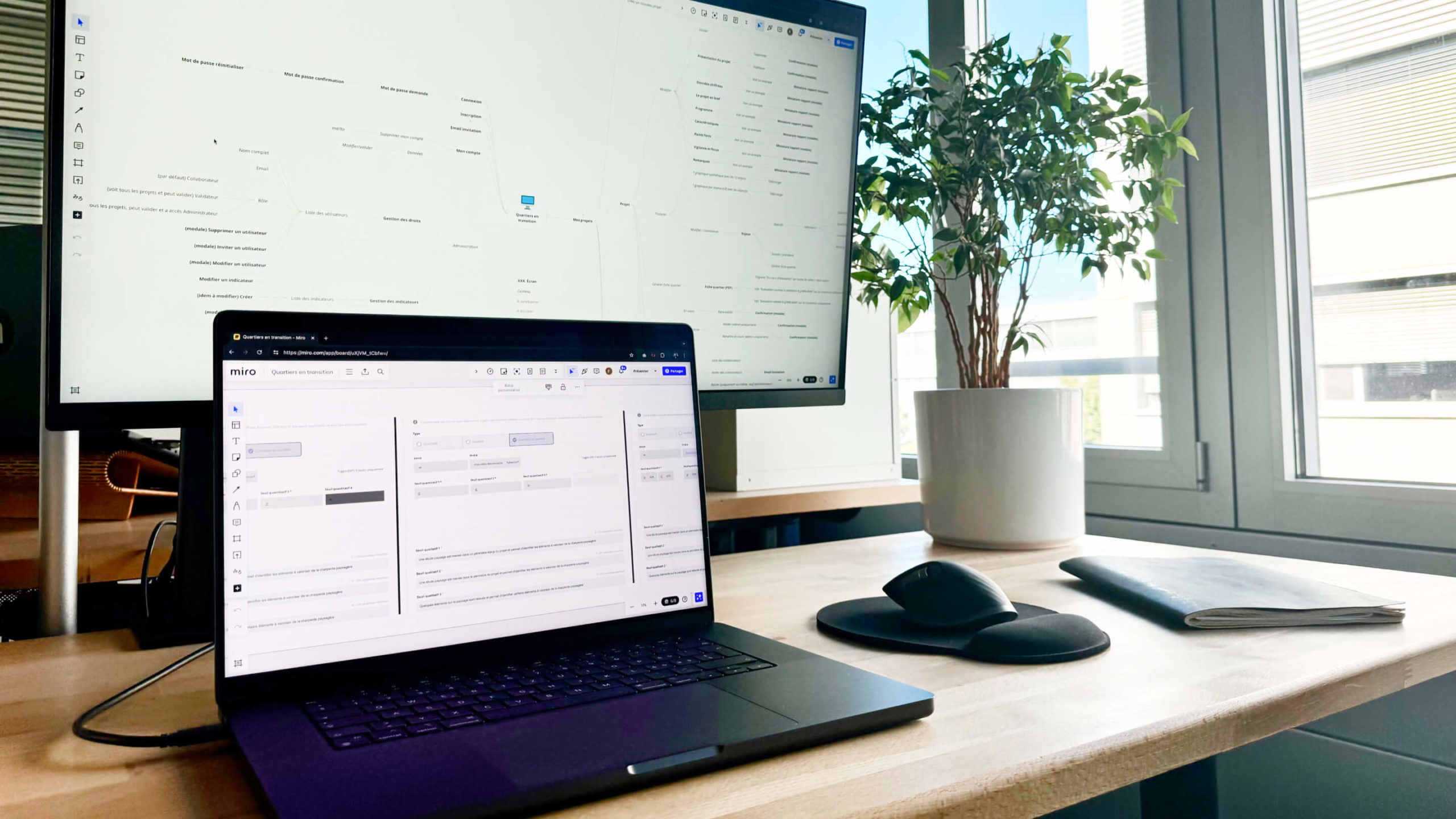
Key indicators for sustainable neighborhoods
The charter describes the quality and sustainability ambitions for Geneva’s neighborhoods according to various parameters. The indicator thresholds help identify, highlight, document, and communicate the strengths and weaknesses of a project at a given planning stage.
By using the evaluation platform, it becomes possible to create a sheet that synthesizes and explains the obtained results. The strengths and weaknesses of the analyzed project are highlighted in the form of a graph. The platform thus becomes a true tool, helping project leaders in the design of their projects. Additions, corrections, and modifications are interpreted logically and uniformly. Furthermore, it ensures the traceability of the choices guiding a project’s life.
We remind that an evaluation aims to help project leaders in designing sustainable neighborhoods. It does not have legal scope and does not create additional legally binding requirements. The evaluation does not replace procedures inherent to project management (opinions, recommendations from commissions and specialized bodies, etc.).
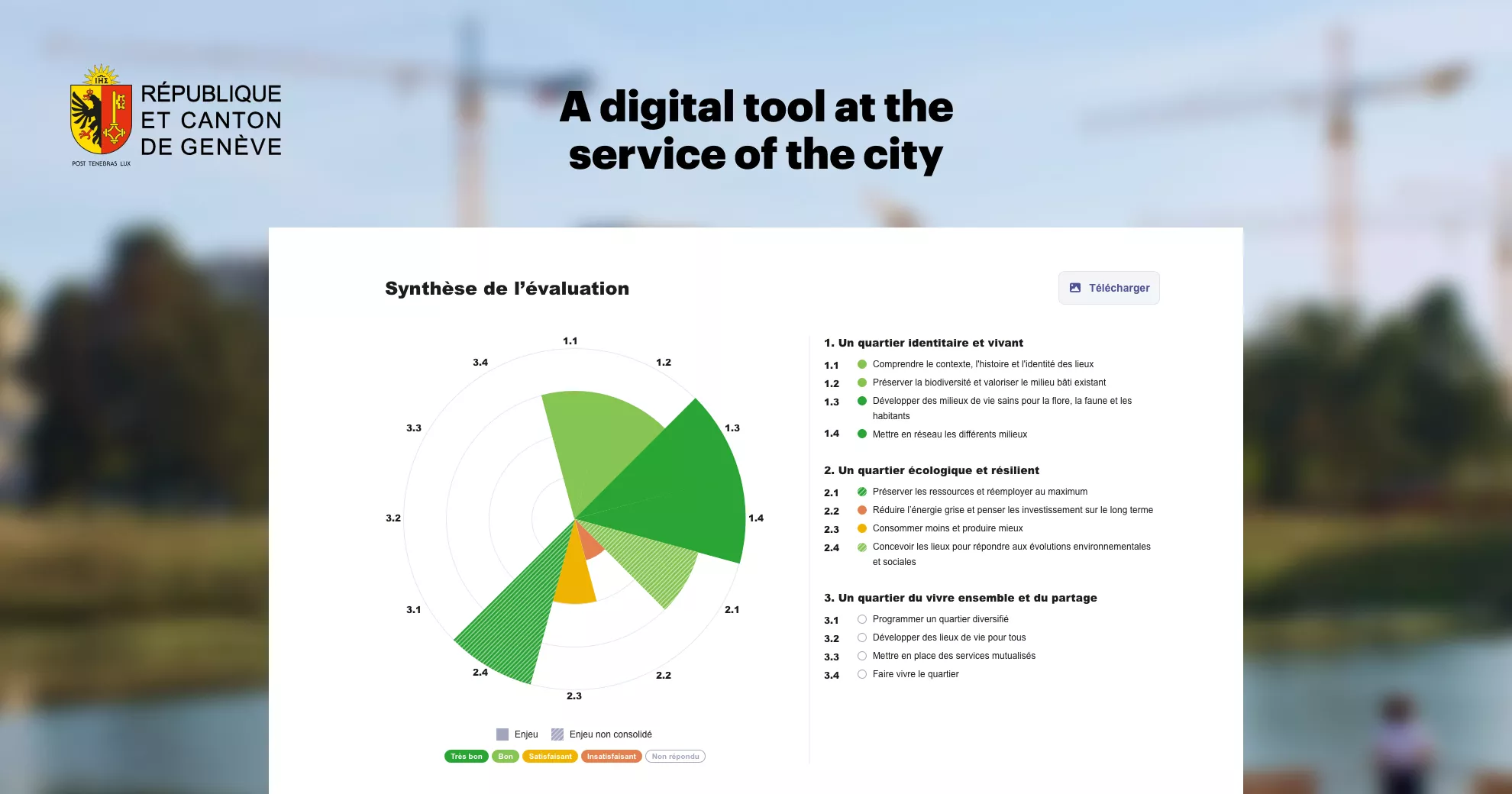
Optimizing input for efficient use
The number of questions (about 100 indicators) and the complexity of some information to be entered can take time for the person responsible for entering the answers. It was therefore important to offer a flexible solution, allowing these data to be entered gradually and revisited later.
We were able to build on the excellent preparatory work of the OU, OCEV, and its AMO (consulting firms Latitude Durable and TRIBU Architecture). Only a few exchanges were needed around the platform’s design with users, project owners, and experts in their field to propose a pragmatic and user-friendly tool.

Fast and robust development
With a small team and a very short timeframe, the technical choices had to optimize development time.
We chose to leverage the full power of TypeScript and a monorepo to share code between the frontend and backend parts. This allowed us to significantly reduce the amount of code to write while maintaining robust and bug-free code.
The final environment was able to fully utilize the capabilities of Infomaniak Jelastic as well as its email and storage services (Swiss backup) to meet the client’s requirements: hosting everything in Switzerland with their current provider.
In addition to the platform, the entire part dedicated to generating PDFs had to match the reference PDF “pixel for pixel,” while dynamically including graphs generated with project data.
Some key features
- Provide a practical tool for evaluating a neighborhood according to the Quartiers en Transition Charter
- Create evaluations, regardless of the project’s progress stage
- Easily enter a series of key neighborhood indicators
- Involve collaborators in the evaluation process
- Quickly consult evaluation results
- Offer a basis for discussion between partners
- Improve traceability and document project life choices
The “Quartiers en Transition” project shows how a strategic vision can be transformed into a high-performance operational tool. The vision of our clients today helps project leaders make informed decisions while ensuring clear traceability of the choices made. The initial results, with 37 projects launched and 127 active users, prove the effectiveness of this approach.
Benjamin Villard – Project Manager at the Department of Territory (DT) of the Canton of Geneva (LinkedIn)As the project manager for the Office of Urban Planning, in charge of deploying Quartiers en Transition, I have been very satisfied with the platform developed by Apptitude. It greatly facilitated the deployment of the tool to project leaders (canton, municipalities, clients, developers) thanks to a playful, appealing, and technically compliant IT solution. We were thus able to move from a complex Excel evaluation table to an easily usable and more meaningful website for the various partners. It is now up to us to keep this platform alive and encourage project leaders to use it to improve our projects in terms of quality and sustainability.
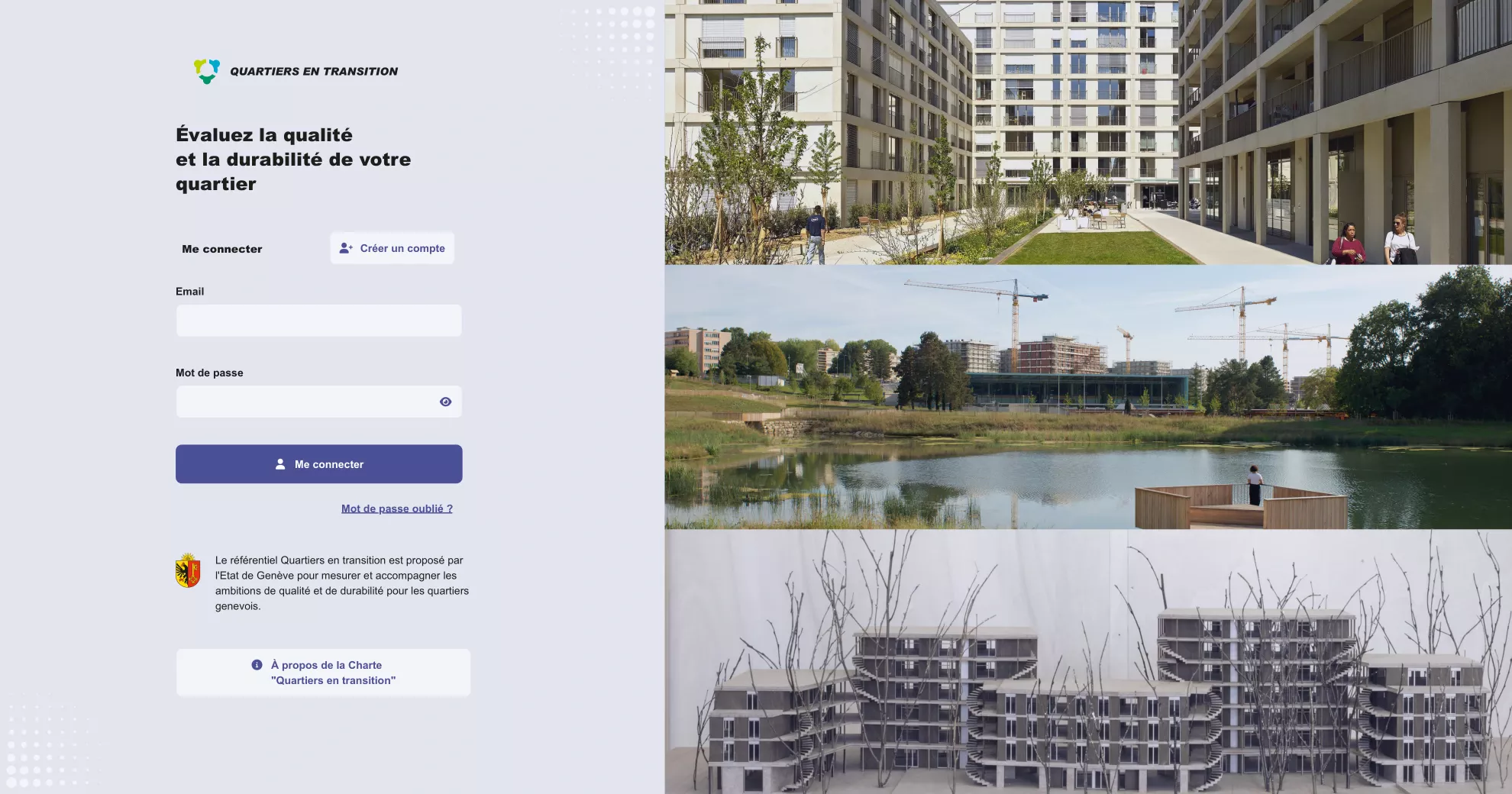
This success paves the way for new opportunities. At Apptitude, we are always ready to take on new challenges. We offer customized solutions to transform your visions into operational tools. Contact us to discuss your projects and discover how we can support you towards innovative and sustainable solutions.
For further information:

